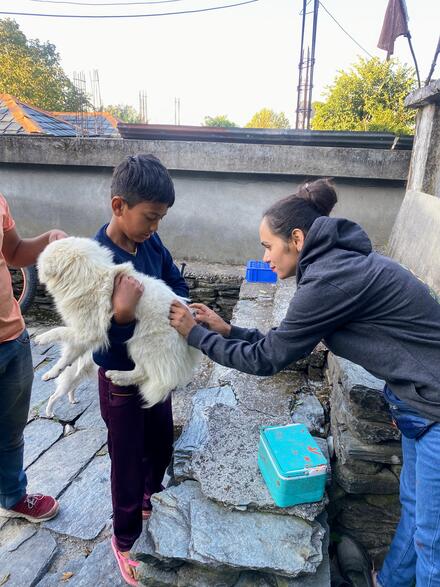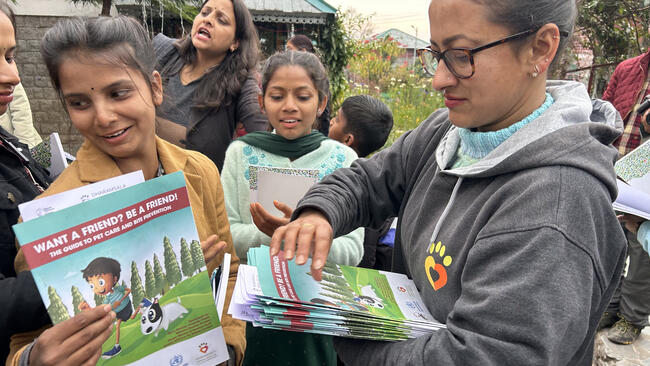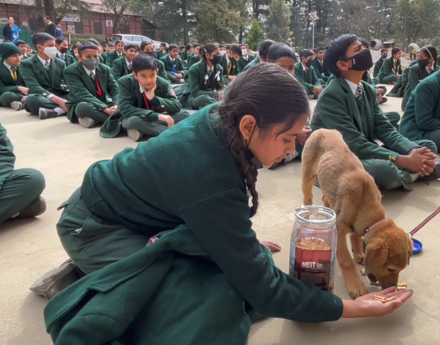Fighting Rabies and Changing Lives: A Conversation with Deb from Dharamsala Animal Rescue

Introduction
In the heart of Himachal Pradesh, India, Dharamsala Animal Rescue (DAR) has been working tirelessly to create a safer world for both dogs and people. As a Rabies Center of Excellence (RCE), their work goes far beyond rescue and rehabilitation—DAR is actively involved in mass dog vaccination and sterilization, community education, and tackling the myths that fuel fear of rabies.
Kerenza from GARC sat down with Deb Jarrett, founder of DAR, to discuss how the organization began, the challenges they face, and how education is transforming the relationship between communities and dogs—one child at a time.

Kerenza: Deb, what first brought you to India, and how did Dharamsala Animal Rescue come to be?
Deb: It all started in 2008 when I traveled to India as a volunteer. I was placed in a local preschool, but what struck me the most wasn’t the school itself—it was the street dogs outside. Many were sick, injured, or suffering from mange, and people either ignored them or actively threw stones at them. One particular dog caught my attention—a mangy stray hanging around the school. When I asked locals if anything could be done for him, they just shrugged. Eventually, I met a local animal rescuer, and after I left town for a few days, I came back to a surprise—a young man running up to me, excitedly telling me that "Tommy" (the stray) was recovering! His family had started feeding him and giving him medicine. That moment made me realize: people cared, they just didn’t have the resources or knowledge to help. That’s where DAR began.
Kerenza: Rabies is a major concern in India. How did your work expand into rabies prevention?
Deb: When I first arrived, I didn’t fully grasp how big of a problem rabies was. But soon after I left Dharamsala, I heard that three people, including a four-year-old girl, had died from rabies. It was devastating. That’s when I realized: people feared dogs because of rabies. The rock-throwing, the hostility—much of it came from a desperate attempt to avoid getting bitten. But the truth is, attacking dogs only makes the situation worse.
From the very beginning, vaccination had to be part of our solution. We started vaccinating street dogs alongside our sterilization work, and over time, we expanded into education programs to help communities understand that throwing rocks won’t stop rabies—but vaccination and responsible interactions will.

Kerenza: What are some of the biggest challenges you face in rabies control and community education?
Deb: One major challenge is the deeply rooted myths surrounding rabies. In rural areas, beliefs and traditions often dictate how people respond to dog bites. For example, many people go to a village priest instead of a doctor when bitten, believing holy water will cure rabies. In one case, a government health officer told us that many bite victims only take the first dose of the rabies vaccine, then skip the rest because they were advised to rely on traditional methods instead. Unfortunately, these deaths often go unreported because victims are cremated before an official diagnosis can be made. Through our humane education programs, we’re working to change this narrative, one community at a time. Another challenge is the operational issues that arise, either through ever-changing regulations or the difficulty in finding caring and dependable staff to help with day-today work.

Kerenza: That brings us to the story of the little girl in school who became emotional during one of your education sessions. Can you share what happened and why it was so meaningful?
Deb: Yes, it was a really touching moment. During one of our school education sessions, we were talking to the children about how to be safe yet kind when interacting with free roaming dogs. Suddenly, one little girl started crying. At first, we weren’t sure why, but when we spoke to her, she told us that a street dog her family had been feeding had recently had a litter of puppies, and they had all died. She was heartbroken but had never really talked about it before. For the first time, she was surrounded by people who understood her pain and didn’t dismiss it. It was a powerful reminder that children care deeply about animals, but often lack the support or knowledge to help them. That moment reinforced why education is so important—not just to prevent rabies but to empower the next generation to show compassion and take action for animal welfare.
Kerenza: Collaboration is essential in the fight against rabies. We've heard that Manali Strays was started by individuals who originated from DAR, and now both are Rabies Centers of Excellence (RCEs). How does this partnership strengthen rabies control efforts?
Deb: The relationship between DAR and Manali Strays is a great example of how expanding efforts through collaboration can create a greater impact. The founders of Manali Strays saw a growing need for rabies control and dog population management in Manali, and rather than stretching one organization too thin, they branched off to address this need while maintaining a strong partnership with DAR. Now, with both organizations recognized as Rabies Centers of Excellence, they continue to work closely together—sharing resources, knowledge, and best practices—to expand the reach of effective rabies elimination strategies. By operating in two key regions instead of just one, they are ensuring that more communities benefit from sustainable and humane rabies control efforts.
Final Thoughts
From vaccinating thousands of dogs to breaking down dangerous myths, Dharamsala Animal Rescue is proving that rabies prevention isn’t just about vaccines—it’s about changing mindsets. As a Rabies Center of Excellence, DAR’s work is helping build a future where people and dogs can coexist safely, without fear.
To learn more or support DAR’s mission, visit Dharamsala Animal Rescue and for more information on RCEs visit EndRabiesNow (driven by GARC).